GeForce 417.01 Driver Performance Analysis featuring the RTX 2070 FE and the EVGA GTX 1060/6 SC using 37 Games
As a returning feature for BabelTechReviews, this driver performance analysis will show the performance of 37 PC games including Battlefield V and Hitman 2 using the latest GeForce Game Ready 417.02 Driver which released four days ago. We will compare these drivers versus the 416.94 drivers from two weeks ago using the RTX 2070 Founders Edition and also the EVGA GTX 1060 SC.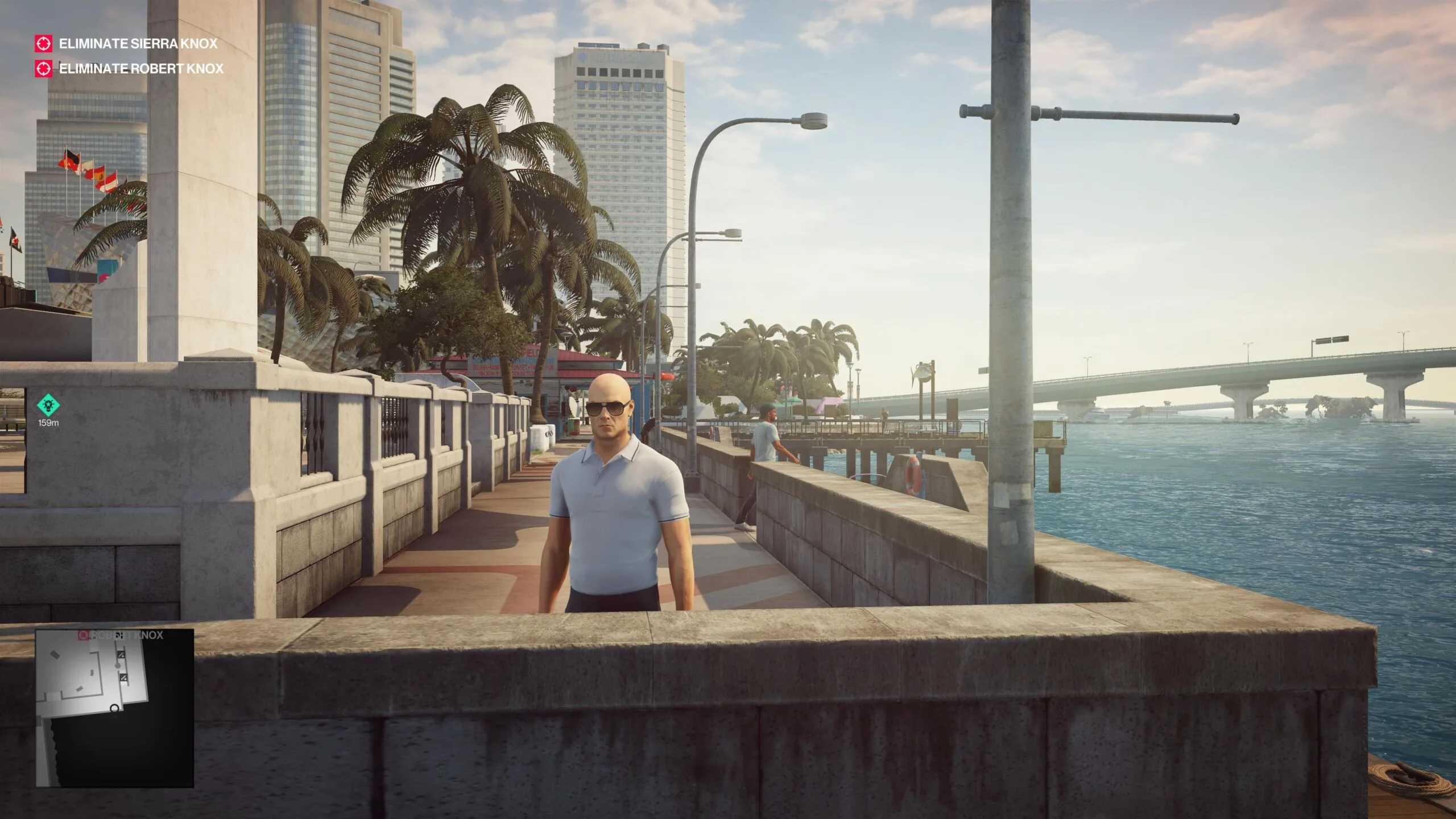
Future BTR driver performance analysis will track the progress of every major driver release from NVIDIA and from AMD, and so we will also compare performance of the Red Devil RX Vega 56 and the RX 590 which are natural competitors of the RTX 2070 and the GTX 1060 SC. AMD has just released a new Adrenalin 18.12.1 software edition driver yesterday and we will cover it’s performance changes by next week.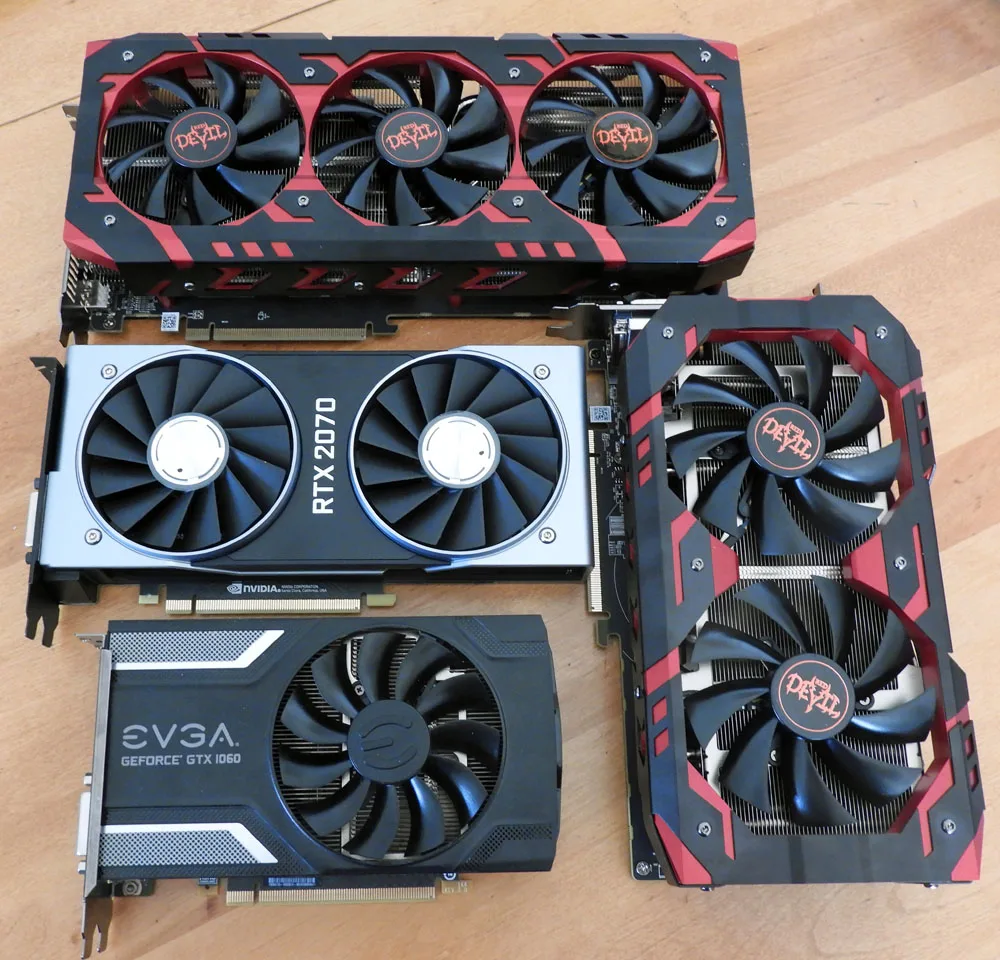
We will document the performance changes of the current GeForce 417.01 driver versus 416.94 on Windows 10 at 1920×1080 and at 2560×1440 resolutions. Our testing platform is a recent install of Windows 10 64-bit Home Edition, and we are using a Core i7-8700K which turbos all 6 cores to 4.7 GHz, an EVGA Z370 FTW motherboard, and 16GB of HyperX DDR4 3333MHz. The games tested, settings, and hardware are identical except for the drivers being compared.
Let’s get to the test configuration, to the driver release notes, and then to our results.
Test Configuration – Hardware
- Intel Core i7-8700K (HyperThreading and Turbo boost are on to 4.7 GHz for all cores; Coffee Lake DX11 CPU graphics).
- EVGA Z370 FTW motherboard (Intel Z370 chipset, latest BIOS, PCIe 3.0/3.1 specification, CrossFire/SLI 8x+8x), supplied by EVGA
- HyperX 16GB DDR4 (2×8 GB, dual channel at 3333 MHz), supplied by HyperX
- RTX 2070 8GB Founders Edition, stock Founders Edition clocks, supplied by NVIDIA
- EVGA GTX 1060 SC 6 GB, stock SC clocks, supplied by EVGA.
- Red Devil RX Vega 56 8GB, stock clocks, supplied by PowerColor.
- Red Devil RX 590 8GB, stock clocks, supplied by PowerColor.
- 480 GB Team Group SSD
- 1.92 TB San Disk enterprise class SSD
- 2 TB Micron 1100 SSD
- Seasonic 850W Gold Focus power supply unit
- EVGA CLC 280mm CPU water cooler, supplied by EVGA
- Onboard Realtek Audio
- Genius SP-D150 speakers, supplied by Genius
- EVGA DG-77, mid-tower case supplied by EVGA
- Monoprice Crystal Pro 4K
Test Configuration – Software
- Nvidia GeForce 416.94 and 417.01 WHQL drivers are used for the RTX 2070 and the GTX 1060.
- AMD’s Adrenalin Software 18.8.40 (press launch drivers) is used for the RX 590 and 18.9.1 used for the RX Vega 56.
- VSync is forced off.
- AA enabled as noted in games; all in-game settings are specified
- Gaming results show average frame rates in bold including minimum frame rates shown on the chart next to the averages in a smaller italics font.
- Highest quality sound (stereo) used in all games.
- Windows 10 64-bit Home edition. All DX11 titles were run under DX11 render paths. DX12 titles are generally run under the DX12 render path unless performance is lower than with DX11. Three games use the Vulkan API.
- Latest DirectX
- All 35 games are patched to their latest versions at time of publication.
- MSI Afterburner, latest beta.
- OCAT, latest version
- Fraps, latest version
37 PC Game benchmark suite & 2 synthetic tests
Synthetic
- Firestrike – Basic & Extreme
- Time Spy DX12
DX11 Games
- Grand Theft Auto V
- The Witcher 3
- Fallout 4
- Watch Dogs 2
- Just Cause 3
- Rainbow Six Siege
- Battlefield 1
- Resident Evil 7
- For Honor
- Ghost Recon Wildlands
- Mass Effect: Andromeda
- Prey
- DiRT 4
- Project CARS 2
- Middle Earth: Shadow of War
- Destiny 2
- Star Wars: Battlefront II
- Final Fantasy XV
- Far Cry 5
- The Crew 2
- Assassin’s Creed: Odyssey
- Call of Duty: Black Ops 4
- Hitman 2
DX12 Games
- Tom Clancy’s The Division
- Ashes of the Singularity: Escalation
- Hitman
- Rise of the Tomb Raider
- Deus Ex Mankind Divided
- Gears of War 4
- Civilization VI
- Sniper Elite 4
- Total War: Warhammer II
- Forza 7
- Shadow of the Tomb Raider
- Battlefield V
Vulkan Games
- DOOM
- Wolfenstein: The New Colossus
- Strange Brigade
NVIDIA Control Panel settings
Here are the NVIDIA Control Panel settings.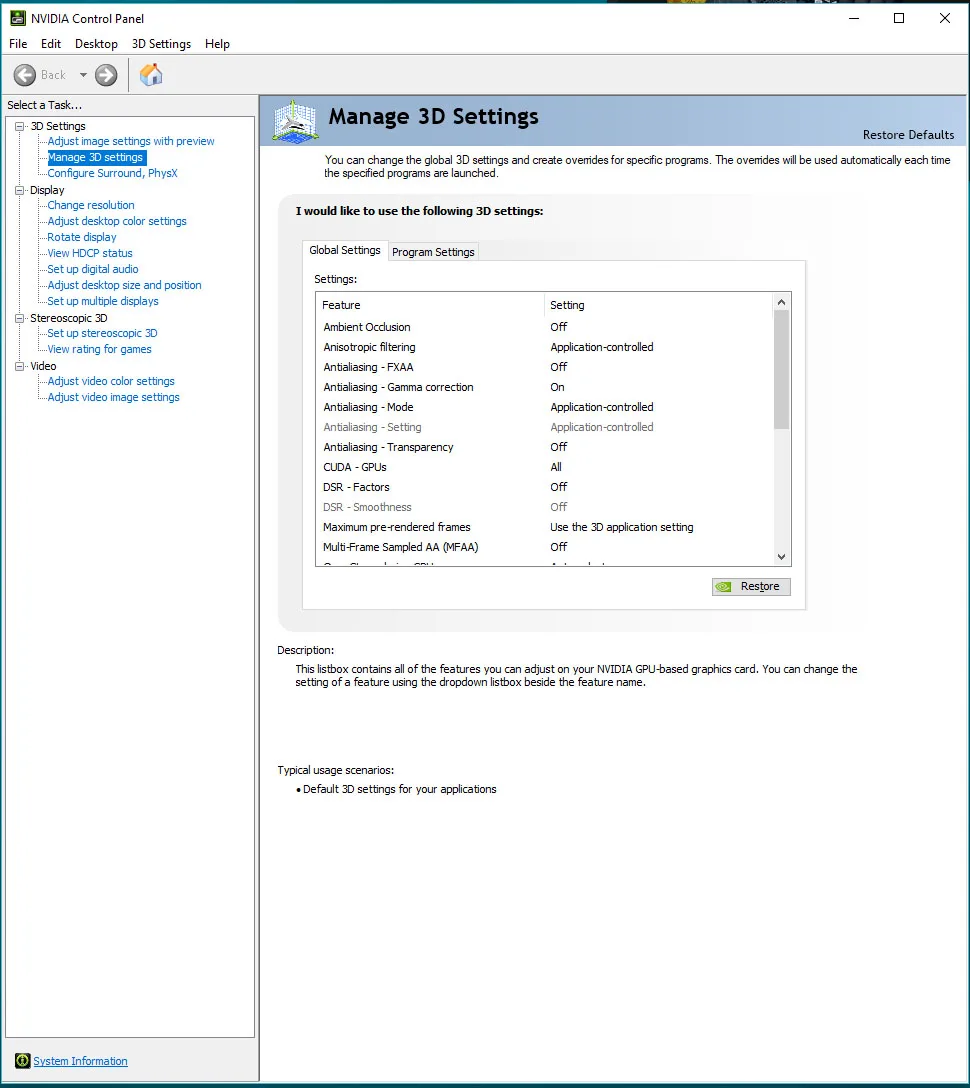
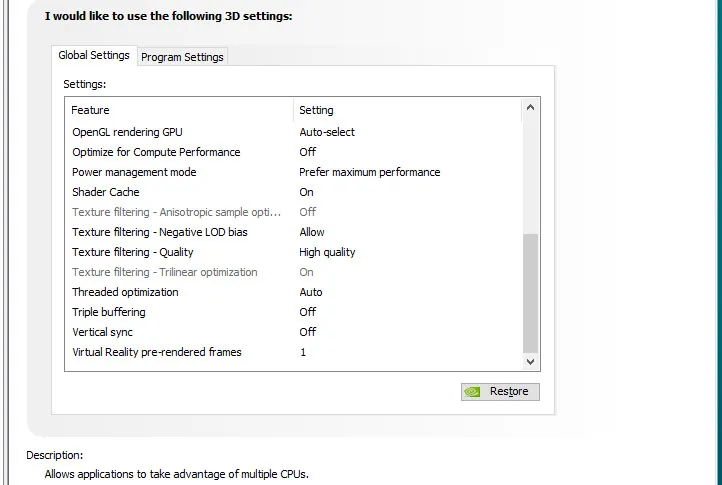 We used MSI’s Afterburner to set both of our GeForce’s highest Power and Temperature targets. By setting the Power Limits and Temperature limits to maximum for each card, they do not throttle, but they can each reach and maintain their individual maximum clocks stock or overclocked.
We used MSI’s Afterburner to set both of our GeForce’s highest Power and Temperature targets. By setting the Power Limits and Temperature limits to maximum for each card, they do not throttle, but they can each reach and maintain their individual maximum clocks stock or overclocked.
AMD Control Center Radeon Settings
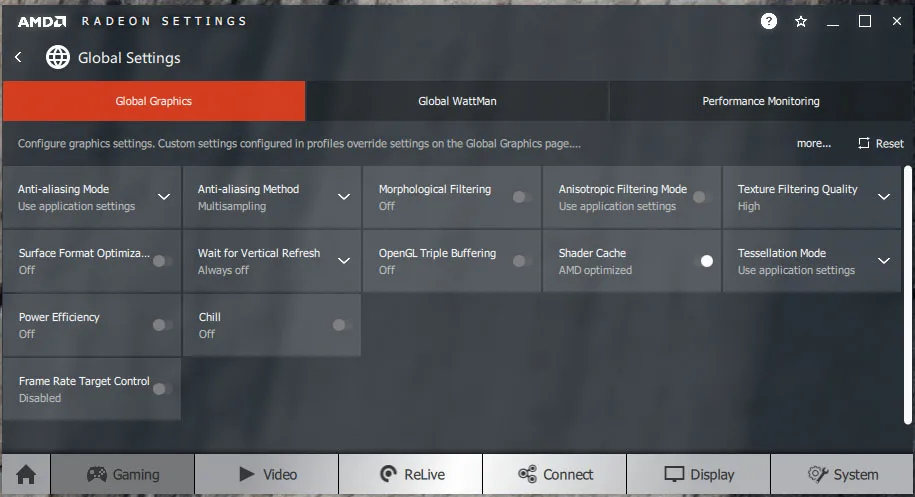 All AMD settings are set so as to be apples-to-apples when compared to NVIDIA’s control panel settings – all optimizations are off, Vsync is forced off, Texture filtering is set to High, and Tessellation uses application settings. We used Wattman to set Radeon power, temperature and fan limits to their maximums to prevent throttling.
All AMD settings are set so as to be apples-to-apples when compared to NVIDIA’s control panel settings – all optimizations are off, Vsync is forced off, Texture filtering is set to High, and Tessellation uses application settings. We used Wattman to set Radeon power, temperature and fan limits to their maximums to prevent throttling.
Game Ready GeForce 417.01 WHQL Drivers
The release notes and download links for the latest GeForce 417.01 drivers can be found starting here for Windows 10. The release notes can also be found here. The included highlights below are from NVIDIA’s website.
Game Ready Drivers provide the best possible gaming experience for all major new releases, including Virtual Reality games. Prior to a new title launching, our driver team is working up until the last minute to ensure every performance tweak and bug fix is included for the best gameplay on day-1.
Game Ready
Provides the optimal gaming experience for Darksiders III
Let’s head to the charts to compare the driver changes from the GeForce 416.94 drivers which released two weeks ago to the latest GeForce 417.01 drivers.
The Summary Chart
Below are the summary charts of 37 games and 2 synthetic tests. Thirty-seven games compare the performance changes for the RTX 2070 and for the GTX 1060 SC from the last 416.94 GeForce drivers to the most recent 417.01 drivers. The highest settings are always chosen and the settings are listed on the charts. The benches were run at 1920×1080 and at 2560×1440. Open each chart in a separate window or tab for best viewing.
Most results show average framerates and higher is better. Minimum framerates are next to the averages in italics and in a slightly smaller font. A few games benched with OCAT show average framerates but the minimums are expressed by frametimes in ms where lower numbers are better. Performance “wins” between the drivers are shown by yellow numbers and if the performance is equal, both sets of numbers are in yellow.
The first two columns show the RTX 2070 FE’s performance. Columns one represents the latest 417.01 driver and Column two represents 416.94. For comparison, the Red Devil RX Vega 56 is included in the third column. The fourth column and fifth columns represent the EVGA GTX 1060 SC 6GB’s performance – column four uses 417.01, and column five is 416.94. The final sixth column compares the performance of the Red Devil RX 590. An “X” means the benchmark could not be run or compared.


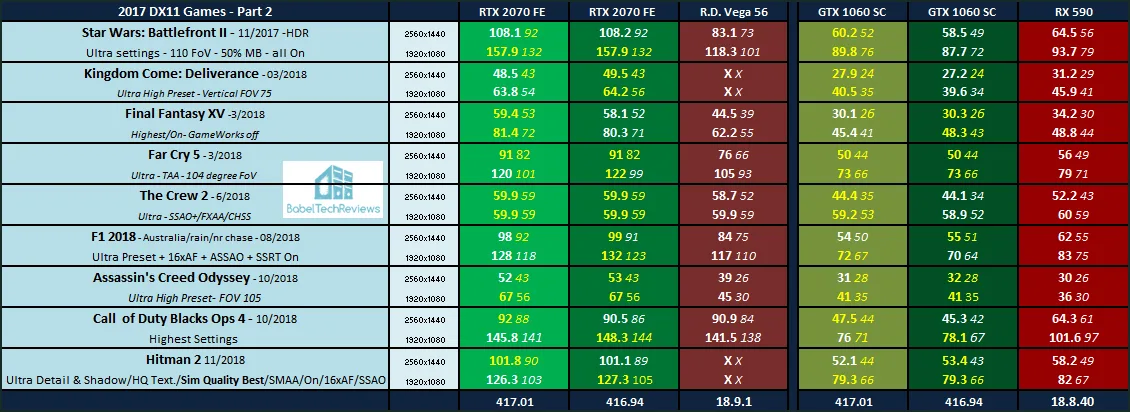

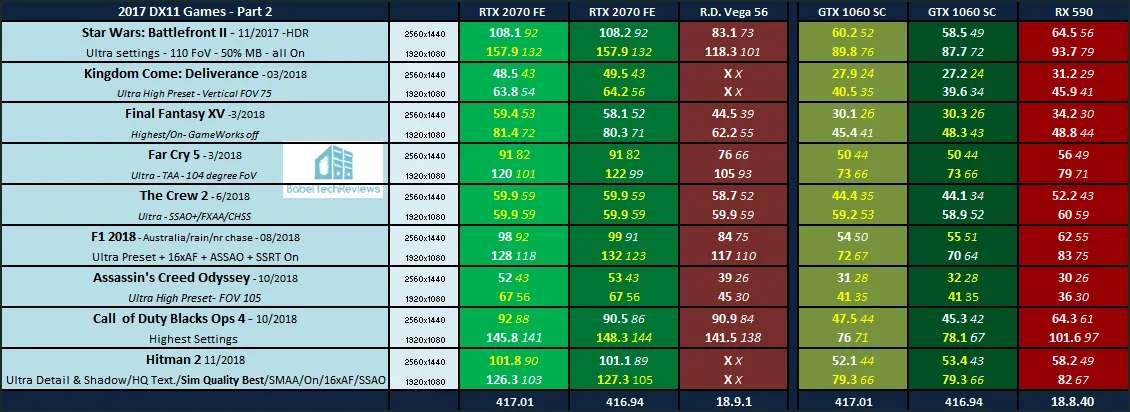

We note mostly incremental performance changes between the latest drivers and the older set with both cards, and the increases are generally as minor as the regressions. However, in a few cases we see slight performance increases with the newest drivers.
Wolfenstein: The New Colossus had serious issues with Mein Leiber settings and the limited vRAM of the GTX 1060, so we dropped our settings to Uber for midrange video cards and the results cannot be compared with the last driver set nor with the Radeons.
Let’s head to our conclusion.
Conclusion:
We would recommend upgrading to the latest Game Ready 416.07 WHQL driver from any older driver set because there are generally stability or performance advantages for the newest games, depending on which game you are playing. We found the latest drivers to be stable overall, and we experienced no major performance issues while benching or playing any of our 37 games. However, if you are already on GeForce 416.94, we wouldn’t necessarily recommend that you upgrade unless you are playing Darksiders III.
For many games in our benching suite, the GeForce 417.01 Software Edition may bring solid improvement in performance over last month’s drivers, however. The benefits generally outweigh the negatives and they are essential for playing some of the newer games including Battlefield V.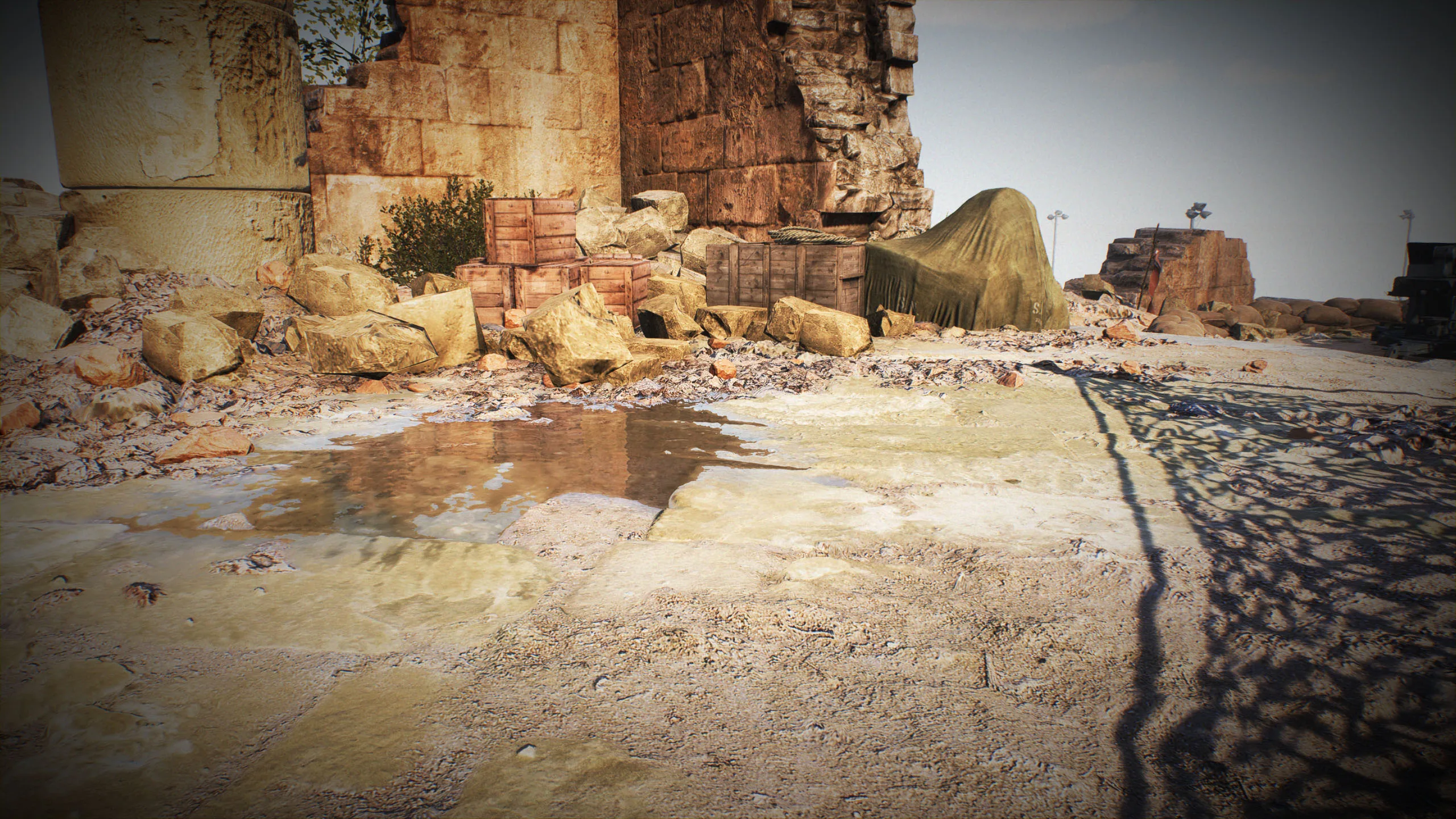
Stay tuned, AMD has just released Radeon Software Adrenalin Edition 18.12.1 yesterday, and we have already started benching them for a brand new driver performance analysis due by Monday. We have also pre-ordered Just Cause 4, and it will become BTR’s 38th benchmark.
Happy gaming!